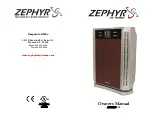
SERVICING
180 Rev. 3
S-1 CHECKING VOLTAGE
WARNING
Disconnect Electrical Power Supply:
1. Remove outer case, control panel cover, etc. from unit
being tested.
With power ON:
WARNING
LINE VOLTAGE NOW PRESENT
2. Using a voltmeter, measure the voltage across terminals
L1 and L2 of the contactor for the condensing unit or at
the field connections for the air handler or heaters.
3. No reading - indicates open wiring, open fuse(s) no power
or etc. from unit to fused disconnect service. Repair as
needed.
4. With ample voltage at line voltage connectors, energize
the unit.
5. Measure the voltage with the unit starting and operating,
and determine the unit Locked Rotor Voltage. NOTE: If
checking heaters, be sure all heating elements are ener-
gized.
Locked Rotor Voltage is the actual voltage available at
the compressor during starting, locked rotor, or a stalled
condition. Measured voltage should be above minimum
listed in chart below.
To measure Locked Rotor Voltage attach a voltmeter to
the run "R" and common "C" terminals of the compres-
sor, or to the T
1
and T
2
terminals of the contactor. Start
the unit and allow the compressor to run for several sec-
onds, then shut down the unit. Immediately attempt to
restart the unit while measuring the Locked Rotor Volt-
age.
6. Lock rotor voltage should read within the voltage tabula-
tion as shown. If the voltage falls below the minimum
voltage, check the line wire size. Long runs of under-
sized wire can cause low voltage. If wire size is adequate,
notify the local power company in regards to either low or
high voltage.
VOLTAGE
MIN.
MAX.
208/230
198
253
115
104
127
REMOTE CONDENSING UNITS
BLOWER COILS
NOTE: When operating electric heaters on voltages other
than 240 volts refer to the System Operation section on elec-
tric heaters to calculate temperature rise and air flow. Low
voltage may cause insufficient heating.
S-2 CHECKING WIRING
WARNING
Disconnect Electrical Power Supply:
1. Check wiring visually for signs of overheating, damaged
insulation and loose connections.
2. Use an ohmmeter to check continuity of any suspected
open wires.
3. If any wires must be replaced, replace with comparable
gauge and insulation thickness.
S-3 CHECKING THERMOSTAT, WIRING, AND
ANTICIPATOR
THERMOSTAT WIRE SIZING CHART
LENGTH OF RUN
MIN. COPPER WIRE
GAUGE (AWG)
25 feet
18
50 feet
16
75 feet
14
100 feet
14
125 feet
12
150 feet
12
S-3A Thermostat and Wiring
With power ON, thermostat calling for cooling
WARNING
LINE VOLTAGE NOW PRESENT
1. Use a voltmeter to check for 24 volts at thermostat wires
C and Y in the condensing unit control panel.
2. No voltage indicates trouble in the thermostat, wiring or
external transformer source.
3. Check the continuity of the thermostat and wiring. Re-
pair or replace as necessary.
Indoor Blower Motor
With power ON:
WARNING
LINE VOLTAGE NOW PRESENT
1. Set fan selector switch at thermostat to "ON" position.
2. With voltmeter, check for 24 volts at wires C and G.
3. No voltage, indicates the trouble is in the thermostat or
wiring.
4. Check the continuity of the thermostat and wiring. Re-
pair or replace as necessary.
















































